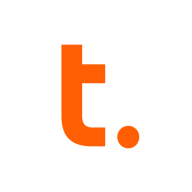

Teradata and Palantir Foundry compete in the data management and analytics market. Teradata shows strength in handling complex analytical functions due to its advanced parallel architecture, while Palantir Foundry stands out for its superior data integration and visualization features.
Features: Teradata's key features include strong parallel processing capabilities, advanced partitioning, and workload management, making it ideal for massive data operations and complex queries. Palantir Foundry excels in data integration across platforms, real-time capabilities, and provides robust tools for data transformation and pipeline management.
Room for Improvement: For Teradata, there is room for improvement in cost management, scalability, and cloud adoption, along with better handling of unstructured data. Its pricing and licensing are often viewed as expensive. Palantir Foundry could benefit from more intuitive technical support and documentation, enhanced data exporting capabilities, and more comprehensive Python support. The interface and cost are also areas of concern.
Ease of Deployment and Customer Service: Teradata offers versatility with on-premises and hybrid cloud environments, providing flexibility and generally high-rated technical support, although response times can improve. Palantir Foundry focuses on public cloud deployment, offering a centralized integration system, and users appreciate its cohesive environment but desire faster support resolutions.
Pricing and ROI: Teradata is acknowledged as a premium product with high costs, serving large projects well with a strong ROI despite being a barrier for smaller businesses. Palantir Foundry also has a high price, justified by its comprehensive features and reduced development needs, with users noting significant ROI. Cost considerations are significant for both, with Teradata noted for consistent performance benefits.


Palantir Foundry is an enterprise data management platform offering comprehensive tooling for working with big data. Because it is an operating system made for modern enterprises, it is highly available and a continuously updated platform.
Palantir Foundry is a fully managed SaaS platform that spans from cloud hosting and data integration to flexible analytics, visualization, model-building, operational decision-making, and decision capture. It equips technical and non-technical users to make data-driven operational decisions.
Palantir Foundry includes tools to integrate data of any scale, format, or structure, and also has granular, flexible access controls for individual datasets. In addition, it has an open, modular architecture with multiple RESTful APIs, it has native applications for developing machine learning and artificial intelligence, it provides sophisticated data science applications for users of all technical abilities, and much more.
Palantir Foundry Features
The most valuable Palantir Foundry features include:
Security, flexibility, interoperability, easy deployment, built-in role classification, purpose-based access controls, interoperable architecture, model integration, AI modeling tools, ontology, custom workflows, team-specific applications, self-serve analytics, lineage system, operational application building, 200+ data connectors, data versioning, change management framework, sand decision orchestration, and custom dashboard and report building tools.
With Palantir Foundry You Can:
Palantir Foundry Benefits
Some of the many Palantir Foundry benefits include:
Reviews from Real Users
PeerSpot users like Palantir Foundry because it has many advantages:
“It is user-friendly, good automation, and allows you to do a better job of data governance.” - Associate, Inhouse Consulting at a pharma/biotech company
“Works seamlessly with good end-to-end capabilities and the capability to scale.” - Wallace H., Sr. Director at a tech services company
Teradata is a scalable data analytics platform designed to meet enterprise demands for large-scale data management and processing, focusing on performance, scalability, and security for complex query executions.
As a leading data warehousing solution, Teradata integrates advanced analytics enabling organizations to derive insights from massive datasets. It supports high-volume data workloads with its architecture optimized for analytical queries. Users benefit from its robust scalability, allowing seamless expansion as data grows. Teradata's SQL engine is compatible with a wide range of data types, ensuring flexibility in data analysis. With advanced security measures, it protects sensitive data across various environments, providing peace of mind to users handling critical information.
What are the most important features of Teradata?Teradata is widely used in industries like finance, telecommunications, and healthcare, where data-driven decisions are critical. Companies leverage its robust analytics capabilities to enhance customer experiences, streamline operations, and ensure compliance with regulatory requirements. In these sectors, quick access to data insights can significantly impact competitive advantage.
We monitor all Data Integration reviews to prevent fraudulent reviews and keep review quality high. We do not post reviews by company employees or direct competitors. We validate each review for authenticity via cross-reference with LinkedIn, and personal follow-up with the reviewer when necessary.